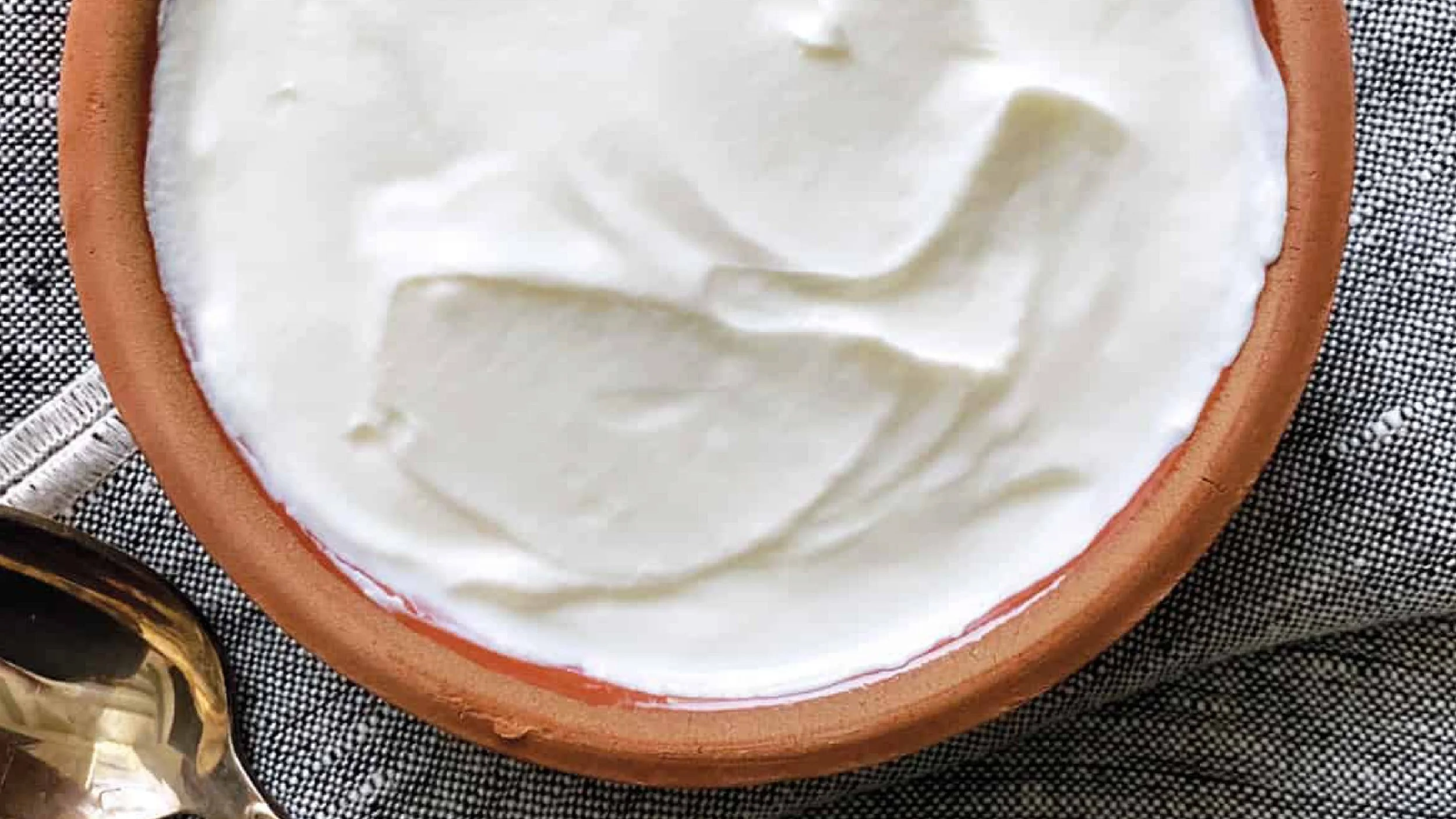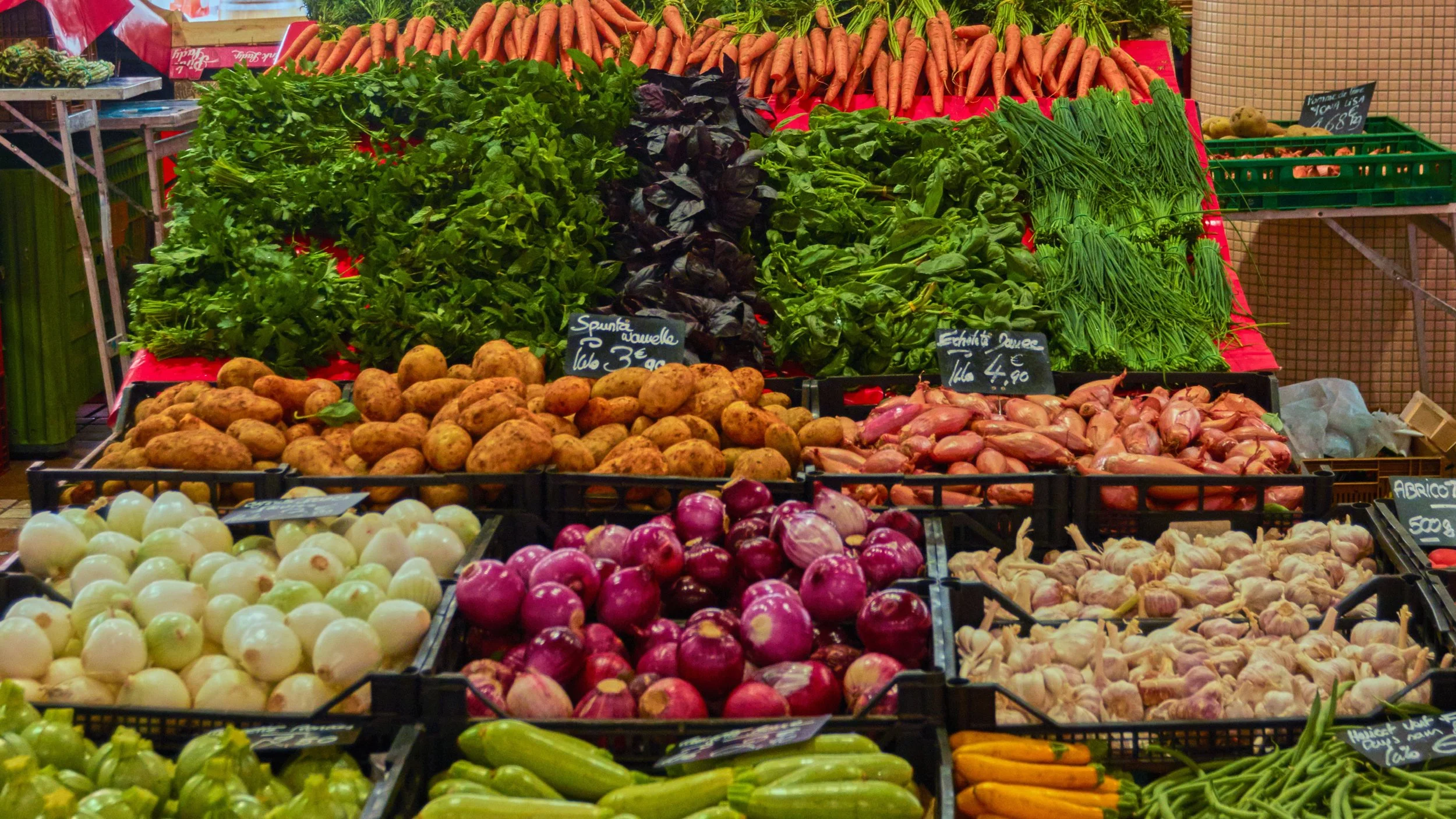Yogurt dishes
Yogurt
Istanbulites have had a long-standing obsession with yogurt dating back to the days of the conquest of Constantinople. In fact, the reason many of the residents of the city had a wooden spoon at hand at all times was to be able to dig in a bowl of yogurt when they got the chance.
So prominent a place yogurt occupies in Istanbul’s culinary culture that there is a word to describe the act of adding yogurt to a dish or any produce to improve its taste: yoğurtlamak.
A rakı table without a trace of yogurt is simply unimaginable.
Yogurt is a great supplement and accompaniment – a chaperone if you will. Carrots, chards, purslane, cucumbers, beets, celery, and of course aubergines. In fact, so strong and delicious is its flavor that it even improves the taste of zucchinis – a vegetable known for its bland taste in Turkish culinary culture. A caveat though: too much yogurt might make all the dishes taste too similar.
Food culture researcher Aylin Öney Tan believes yogurt has a special place on meyhane tables because it does not strain the stomach, gives you an appetite, and refreshes the palate.
Although no certain information regarding where and when yogurt originally emerged exists, many believe what the Indians called “the food of gods” was first produced sometime around the 5th millennium BC in Mesopotamia.
Ever since the early days of the Byzantine rule, the residents of the city have had easy and cheap access to delicious dairy products including yogurt thanks to the innumerable dairy farms, aka mandıras swarming the hills of Constantinople and Bosporus. In Ottoman Istanbul, owners of these dairy farms would sell their products in markets set up in the agoras where the barbas (meyhane owners) and other urbanites procured fresh yogurt.
When it comes to mezes, strained yogurt with its distinctive, smooth texture is, by and large, the only way to go. Because most of the liquid is extracted during its production, it is thicker – sliceable even – and does not get watery and spoil the other ingredients.
For many a yogurt aficionado, the strained yogurt produced in Silivri (a southwestern suburb of Istanbul) is indisputably the tastiest of its kind. Made from locally-produced water buffalo milk, Silivri yogurt has the consistency of cheese and therefore has been the choicest yogurt for meze masters since the 1830s.
The two other famous yogurt-producing regions today are Silifke (situated on the Mediterranean coast) and Kanlıca (located on the Asian side of the Bosporus). For the former, only the milk of goats fed with grass from Toros Mountains’ natural meadows is used. The latter was first produced by a Bulgarian émigré by the name of Poyraz İbrahim Agha who fled the 1877-78 Russo-Turkish War. Served with a sprinkle of caster sugar and made using a mizture of locally produced goat, cow, sheep, and water buffalo milk, Kanlıca yogurt used to be sold on Bosporus and Princes’ Islands beaches, ferries, and even movie theaters. Today, it can only be procured at high-end supermarkets or local cafes and shops in and around Kanlıca.
Today, most Istanbulites buy their yogurt from supermarkets, charcuteries, or dairy stores. However, as more and more people adopt healthier lifestyles, local and independent yogurt producers have emerged as viable alternatives. Almost all of these independent producers own a small dairy farm outside Istanbul and deliver freshly made, no-brand strain yogurt and unpasteurized milk to their regular customers on specified days of the week.
Cucumber
One of the oldest vegetables cultivated, cucumbers arrived in Greece and Asia Minor around 1000 BC. England was introduced to cucumbers in the 14th century but they only gained popularity in the 17th century. Today, most of the cucumbers found in London come from either Spain (short, dark green, and spiny) or the Netherlands (longer).
The Turkish word for cucumber, hıyar, is Persian in origin. In the old days, hıyar used to be so bitter that before peeling, you’d behead it, and rub the chopped part on its neck clockwise, which would release a foam, thereby de-bittering it.
The crisp taste, crunchy texture, and mouth-watering aroma of fresh cucumbers make them outstanding figures of any given rakı table.
In Ottoman Istanbul, with truck gardens all over the city, meyhane owners and residents alike would drop by any one of them at their convenience, and pick as many cucumbers or other greens as they needed for the day, consuming or serving only the freshest produce available.
Çengelköy Bademi, a specific cucumber named after the village (part of Üsküdar on the Asian shore of the Bosporus) it is cultivated in, is arguably the most famous hıyar grown and consumed in the city. What distinguishes these small, delicious cucumbers from others is their unique fragrance.
Since the 1990s most of the meadows in Çengelköy have been zoned for housing and today only a few small farms dedicated to cucumber cultivation remain. According to locals, most of the so-called Çengelgöy cucumbers on the market are mere imitations of the original in terms of size and perhaps even taste – but they cannot even come close to emulating the kind of pleasures a real Çengelköy Badem’s distinguishing aroma induces.
Istanbulites like their cucumbers not only in their cacık or salads but also on their own. Until recently, mobile vendors pushing their wooden carts brimming with cucumbers through Istanbul’s crowded squares and streets was quite a common sight. For many an Istanbulite nothing could beat the replenishing effects of a peeled, salted cucumber on a scorching summer day.
Today, most Istanbulites procure their cucumbers from greengrocers or the neighborhood markets. Until the 1960s the wholesale produce market, located in Eminönü, offered the residents of the city fresh and cheap produce. Most of the produce would arrive from neighboring villages and the Golden Horn would be swarming with barges waiting to offload their cargo in the market. However, as the truck gardens disappeared and Istanbul started to rely on cities farther away to meet its vegetable demands, keeping the wholesale market in the city was no longer viable. In the end, the market was gradually moved beyond the borders of the city, so that huge trucks traveling from all over the country and not the residents could have easy access.
One of the most popular choices in the city today is the dark green, spiky, Black Sea cucumber that is 20 to 25 cm long. Only available in the winter months and almost exclusively sold in neighborhood markets, these cucumbers are particularly appealing for their juiciness.
Freshest Produce
As Istanbul’s truck gardens disappear one by one, the bustling neighbourhood markets step up the plate to provide the urbanites with the freshest ingredients to prepare yogurt dishes with. One such produce is the purslane, a fleshy green often enjoyed with garlicized yogurt and chilli flakes on top.
Yedikule Lettuce
Yedikule lettuce (marul), named after the truck garden it grows in, can be eaten with a few drops of lemon juice and salt, in salads, or with yogurt, and is undoubtedly the city’s favorite green.
Lettuce, of course, has been around since the 5th millennium BC but the Yedikule type is indeed special – it is crunchier, juicier, and perhaps most importantly its texture doesn’t allow it to get soggy like other lettuces, making it a precious member of the rakı table family.
Yedikule was so famous for the lettuce produced in the borough that while almost every other high school in the city organized “pilaf days” for their alumni, Yedikule High School held “lettuce days.”
The Yedikule truck gardens, located next to the city walls in Fatih, were gradually destroyed after the 1980s as a result of unplanned urbanization and corrupt zoning policies. So much so that at one point, Yedikule lettuce became a delicacy for the residents of the city. However, since 2016 thanks largely to the initiatives of the Istanbul branch of Slow Foods, the gardens have become more fertile again. As part of their aim to rejuvenate Istanbul’s ailing truck garden culture, Slow Foods celebrates the second Saturday of every May as the Marul Holiday.
These 1500-year-old gardens bear traces of a multi-layered tradition of working the land that spans from the days of Theodosius II to the early republic.
Lettuce is Yedikule’s most famous but not only produce: radishes, rockets, watercress, mulberries, cauliflower, kale, tomatoes, peppers, spring onions, thyme, and, purslane – another green Istanbulites love adorning with yogurt – are also among its offerings.
Garlic
Garlic is a seasoner that is used in pretty much every dish from Istanbul’s culinary trove.




